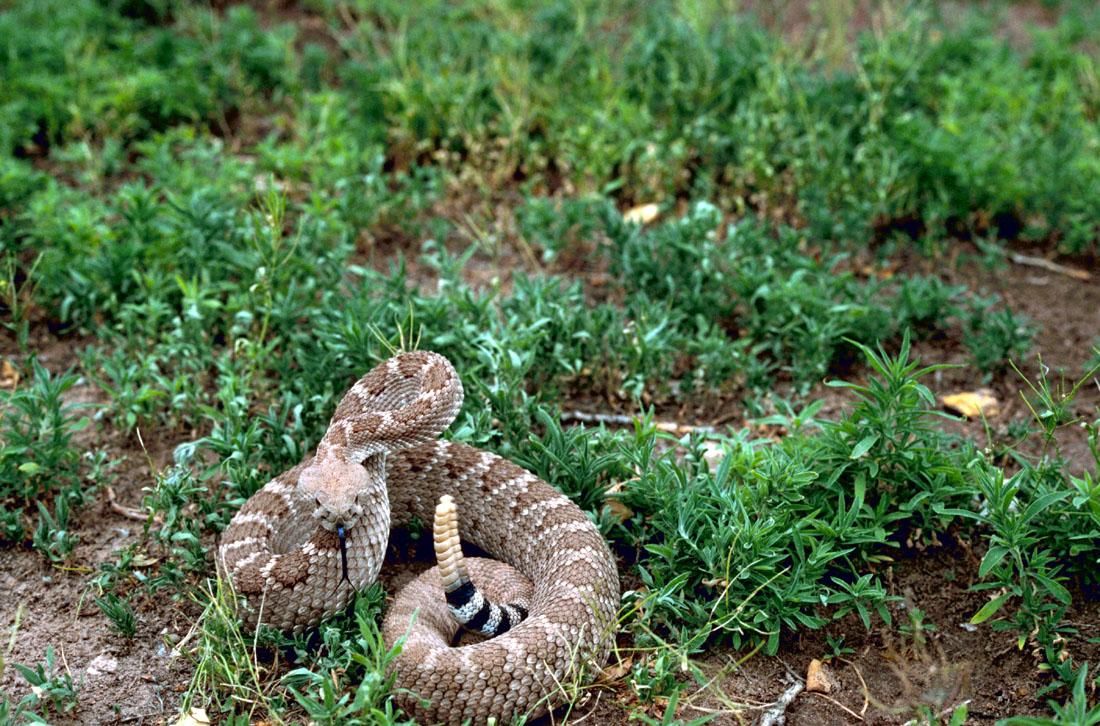 |
| http://dskogsphoto.com/wp-content/uploads/2012/05/3521-Western-Diamondback-Rattlesnake-Crotalus-atrox.-Sonoran-Desert-Arizona.jpg Western Diamondback Rattlesnake |
Crotalus Atrox, also known as the Western diamondback rattlesnake which features triangular shaped head and heavy bodied. It is the largest southwestern rattlers and is considered as the most dangerous as they are venomous. The size of the snake is up to 7 feet long, around 2 meters. The tail has got black and white stripes and there are dark diamond shaped patterns on its back. On its face, there are two dark diagonal lines starting from its eyes to jaw on both side.
 |
| https://upload.wikimedia.org/wikipedia/commons/9/97/Western_diamondback_rattlesnake.jpg |
Symptoms after getting a rattlesnake bite:
- Temporary or permanent tissue and muscle damage
- Two puncture marks
- Drooping eyelids
- Tiredness and muscles weakness
- Low blood pressure
- Internal bleeding which will also cause bruising and discoloration on the skin
- Blister, pus, black tissue around the wounds, ulcer
- Tingling and numbness
- Pain and burning sensation at the area of the snakebite
- Hard to breathe
- Swelling and redness at the area of the snakebite after a few minutes
- Dizzy, vomit, sweating, thirst, headache and feeling sick
- May cause kidney failure and serious allergic reaction
 |
| http://www.herpnation.com/wp-content/uploads/2013/01/Crotalus-atrox.jpg |
On below, I have found a report in 2015 of rattlesnake bite in Arizona discussed by RandyBabb and Keith Boesen-
Randy Babb, who is a biologist with the Arizona Game and Fish Department, said 'Arizona is home to 13 species of rattlesnakes, with eight or nine species living in Southeastern Arizona, depending on how the region is defined. They range far and wide- from deserts, canyons and forests to urban backyards.'Keith Boesen, who is a director of the Arizona Poison and Drug information center, said '150 to 160 rattlesnake bites are reported every year to the Poison and Drug information center, which covers all Arizona counties except Maricopa County.'
References:
- http://www.desertusa.com/reptiles/rattlesnake-bites.html
- http://www.whmentors.org/saf/snakes.html
- http://www.livescience.com/43683-rattlesnake.html
- http://www.backpacker.com/survival/out-alive-bitten-by-a-rattlesnake/2/#bp=0/img1
- http://www.meb.uni-bonn.de/dtc/primsurg/docbook/html/x12657.html
- http://tucson.com/news/local/rattlesnakes-are-out-and-they-re-biting/article_023b5a36-9f33-591b-bce8-bead42c4fa23.html
- http://www.nhs.uk/conditions/bites-snake/pages/treatment.aspx
No comments:
Post a Comment